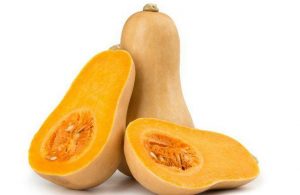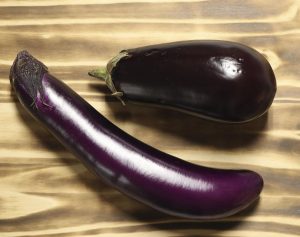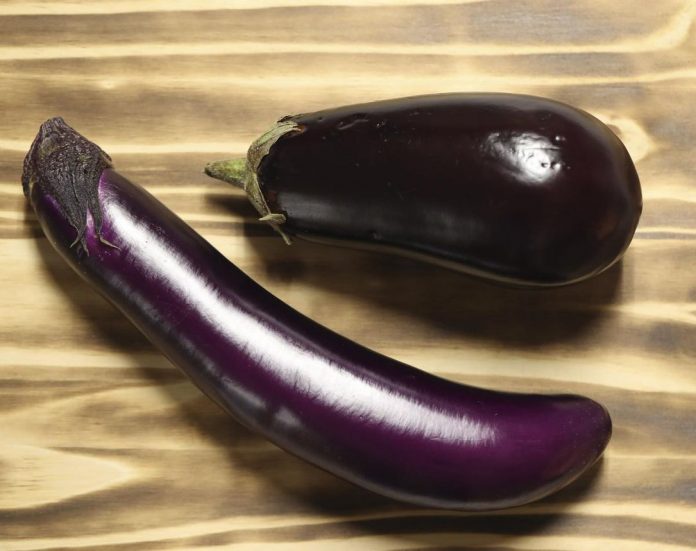Starchy vs Non-Starchy Vegetables:
Starch is the main type of carbohydrate in your diet.
It’s often referred to as a complex carb, as it is made up of a number of joined sugar molecules.
Starch can be found in a range of foods, including breads, cereals, noodles, pasta, as well as starchy vegetables.
However, most vegetables contain only small amounts of starch and are classified as non-starchy types.
Very generally speaking, cooked starchy vegetables, such as potatoes, pack about 15 grams of carbs and 80 calories per 1/2 cup (70–90 grams), whereas non-starchy types like broccoli contain about 5 grams of carbs and 25 calories in an equivalent portion (1, 2).
US health agencies recommend eating 2.5 cups of vegetables each day — both starchy and non-starchy types (3Trusted Source).
Here are some common examples for each group:
Starchy Vegetables
- Beans (kidney, navy, pinto, black, cannellini)
- Butternut squash

- Chickpeas
- Corn
- Lentils
- Parsnips
- Peas
- Potatoes
- Sweet potatoes
- Taro
- Yams
Non-Starchy Vegetables
- Artichokes
- Asparagus
- Bean sprouts
- Brussels sprouts
- Broccoli
- Cabbage
- Cauliflower
- Celery
- Cucumber
- Eggplant (also known as aubergine)

- Mushrooms
- Onions
- Peppers (also known as capsicum)
- Salad greens
- Spinach
- Tomato
- Turnips
- Zucchini (also known as courgette)
SUMMARY: Vegetables can be classified into two main types based on their starch content. Starchy vegetables include potato, corn, peas and lentils, while non-starchy varieties include broccoli, tomatoes, cauliflower and mushrooms.
Both starchy and non-starchy vegetables boast an impressive nutrient profile.
While nutrient content varies depending on the type of vegetable and the cooking method, all types naturally contain a range of essential vitamins and minerals.
In fact, vegetables are some of the richest sources of potassium, vitamin K, folate and magnesium. These nutrients are particularly important for bone health, heart health and a healthy pregnancy (4Trusted Source, 5Trusted Source, 6Trusted Source).
Vegetables also contain small amounts of other beneficial nutrients, including iron and zinc.
What’s more, they’re loaded with antioxidants — such as vitamins C and E — which are compounds that help protect cells from harmful damage caused by free radicals and oxidative stress (7Trusted Source).
As a result, antioxidants may fight the aging process and reduce your risk of chronic diseases like heart disease, cancer and diabetes (8Trusted Source, 9Trusted Source, 10Trusted Source).
Vegetables also tend to be naturally low in sugar, fat and sodium — so you can eat a relatively large quantity without many adverse health effects.
SUMMARY: Starchy and non-starchy vegetables are rich in many important vitamins and minerals, including potassium, folate and vitamin K. Both types are also a good source of antioxidants, such as vitamins C and E.
Another shared feature of starchy and non-starchy vegetables is their high fiber content.
While fiber content varies according to type, most starchy vegetables contain 4–6% fiber — that’s about 2–4 grams of fiber per 1/2 cup (70–90 grams), or 6–14% of the Reference Daily Intake (RDI) .
Some starchy vegetables pack even higher amounts. For example, lentils, beans and chickpeas contain 5–8 grams of fiber per 1/2 cup (70–90 grams), or 20–32% of the RDI .
Similarly, non-starchy vegetables are also rich in fiber. Most non-starchy vegetables contain 2–3.5% fiber and 1.5–2.5 grams per 1/2 cup, or 7–10% of your daily needs .
Fiber can keep your bowel movements regular. Studies suggest it may also prevent digestive conditions, such as inflammatory bowel disease and reduce cholesterol, blood sugar levels and your risk of heart disease and diabetes (19Trusted Source, 20Trusted Source, 21Trusted Source, 22Trusted Source).
For these reasons, eating a range of starchy and non-starchy vegetables each day is a great way to meet your fibre needs and improve your digestive and overall health.
SUMMARY: Both starchy and non-starchy vegetables are good sources of fibRE, which promotes digestive health and may reduce your risk of heart disease and diabetes.
Some types of starchy vegetables — including potato and corn — have caused controversy due to their high starch content.
Though some people believe they should be avoided altogether, starchy vegetables provide a range of beneficial nutrients and can make a healthy addition to your diet when consumed in moderation.
Compared to their non-starchy counterparts, starchy vegetables contain higher numbers of carbs and calories.
Carbs
One big difference between starchy and non-starchy vegetables is their carb content.
Starchy vegetables pack around 3–4 times more carbs than non-starchy types, with about 11–23 grams of carbs in every 1/2 cup (70–90 grams) (1, 11, 13, 15).
For this reason, if you have diabetes or follow a low-carb diet, you may want to limit your intake of starchy vegetables.
That’s because they contain a similar number of carbs as bread, rice and cereals. Starchy vegetables can raise your blood sugar levels faster than non-starchy types (23Trusted Source).
However, all starchy vegetables except potatoes rank low to medium on the glycemic index (GI). This is a measure of how much and how quickly a food raises blood sugar levels after being eaten (24).
Therefore, most starchy vegetables only produce a slow, low rise in blood sugar levels despite their carb content (23Trusted Source).
If consumed in moderation — in servings of about 1/2–1 cup (70–180 grams) — starchy vegetables may be suitable for people who have diabetes or maintain a low-carb diet (25).
Calories
Due to their high carb content, starchy vegetables also have more calories — around 3–6 times more than non-starchy vegetables.
While calorie content varies depending on the type, most starchy vegetables provide 60–140 calories for each 1/2-cup (70–90-gram) serving, compared to 15–30 calories in the same amount of non-starchy vegetables (1, 11, 13, 15).
Therefore, be mindful of your portion size and cooking method when preparing and consuming starchy vegetables, especially if you’re trying to lose weight. The calories can quickly add up (26).
However, consuming 1/2–1 cup (70–180 grams) of boiled, roasted, baked or steamed starchy vegetables at each meal is unlikely to result in excess weight gain when incorporated into a healthy diet.
SUMMARY: Starchy vegetables have 3–6 times more calories and carbs than non-starchy types. As a result, it’s important to eat starchy vegetables in moderation, especially if you have diabetes or are looking to lose weight.
Starchy vegetables are also a great source of resistant starch and protein, both of which have a number of health benefits.
Resistant Starch
Starchy vegetables are especially rich in a type of starch known as resistant starch (27Trusted Source).
Resistant starch acts in a similar way to soluble fiber. It passes through your digestive tract mainly unchanged, then is broken down by beneficial gut bacteria (28Trusted Source).
When your gut bacteria break down resistant starch, they produce short-chain fatty acids (SCFAs) (8Trusted Source).
Resistant starch and SCFAs have a number of positive effects on your body. They may protect against digestive conditions, such as ulcerative colitis, and reduce blood sugar, weight and cholesterol (29Trusted Source, 30Trusted Source, 31Trusted Source).
A range of starchy vegetables, including beans, peas and corn, are composed of around 1–5% resistant starch (32Trusted Source).
At 1%, potatoes contain somewhat low amounts. However, this increases as high as 5% when potatoes are cooked through and left to cool — such as in a potato salad (32Trusted Source).
Protein
Lastly, some starchy vegetables — especially beans, chickpeas and lentils — are good sources of protein.
In fact, they’re some of the best sources of plant-based protein, as they contain up to 9 grams of protein in a 1/2 cup (70–90 grams), or 18% of the RDI (13, 14, 15).
For this reason, beans, lentils and chickpeas make great substitutes for meat in vegetarian and vegan diets.
Their protein content may promote feelings of fullness, keeping your appetite and weight under control. It can also help build and preserve muscle mass and strength (33Trusted Source, 34).
SUMMARY: Most starchy vegetables are an excellent source of resistant starch. Some, such as beans and lentils, are also high in plant-based protein and a good alternative to meat in vegetarian and vegan diets.
Non-starchy vegetables are very low in calories, with only 15–30 calories in a 1/2 cup (70–90 grams) (16, 17, 18).
For this reason, you can eat large portions of non-starchy vegetables without taking in enough calories to gain weight.
They’re also comprised of about 90–95% water, making them a good source of hydration in your diet. Therefore, non-starchy vegetables can help you meet your daily fluid needs (2, 17, 18).
Despite their low calorie content, non-starchy vegetables are high in fiber and contain essential vitamins and minerals. In fact, they have small amounts of almost all the vitamins and minerals you need.
Additionally, non-starchy vegetables are low in carbs — only 4–6 grams of carbs in a 1/2 cup (70–90 grams). As a result, they have little impact on blood sugar levels and are suitable for people following low-carb diets or who have diabetes (35Trusted Source, 36Trusted Source).
It’s best to consume a variety of non-starchy and starchy vegetables throughout the day. They will add color, nutrients and flavor to your meals for very few calories.
SUMMARY: Non-starchy vegetables are very low in calories and have a high water content. Still, they pack an impressive nutrient profile and provide you with nearly all the vitamins and minerals you need.
In addition to their health benefits, starchy and non-starchy vegetables are delicious, versatile and easy to add to your diet.
Fresh and frozen whole vegetables are generally considered the healthiest options, followed by juiced and canned varieties.
Bear in mind that juicing tends to reduce fiber content while canning often adds sugar and salt (37, 38).
What’s more, preparation and cooking methods have a major impact on these vegetables’ nutritional quality.
Choose cooking methods like baking, boiling and steaming while limiting unhealthy condiments, such as sauces or dressings, to avoid extra calories, salt and fat.
It’s also best to limit your consumption of fried and processed vegetable products — such as corn and potato chips — as these products can be high in calories, fat and salt.
For good health, eat at least 2.5 cups of starchy and non-starchy vegetables each day to maximize your vitamin and nutrient intake (3Trusted Source, 39Trusted Source).
SUMMARY: Both starchy and non-starchy vegetables can be a healthy and delicious addition to your diet. The healthiest vegetable dishes are boiled, steamed or baked with the skin on — without any unhealthy toppings such as sauces or dressings.
Both starchy and non-starchy vegetables pack an impressive amount of vitamins, minerals and fiber.
Starchy vegetables have more carbs, calories, protein and resistant starch. They should be consumed in moderation — especially if you have diabetes, follow a low-carb diet or are trying to lose weight.
Non-starchy vegetables are very low in calories while offering similar amounts of fiber and nutrients as starchy varieties.
Both starchy and non-starchy make delicious and nutritious additions to your diet as long as they’re prepared and cooked in healthy ways.
Aim to incorporate at least 2.5 cups of both types into your daily meals to make the most of the different nutritional qualities that each provides.









